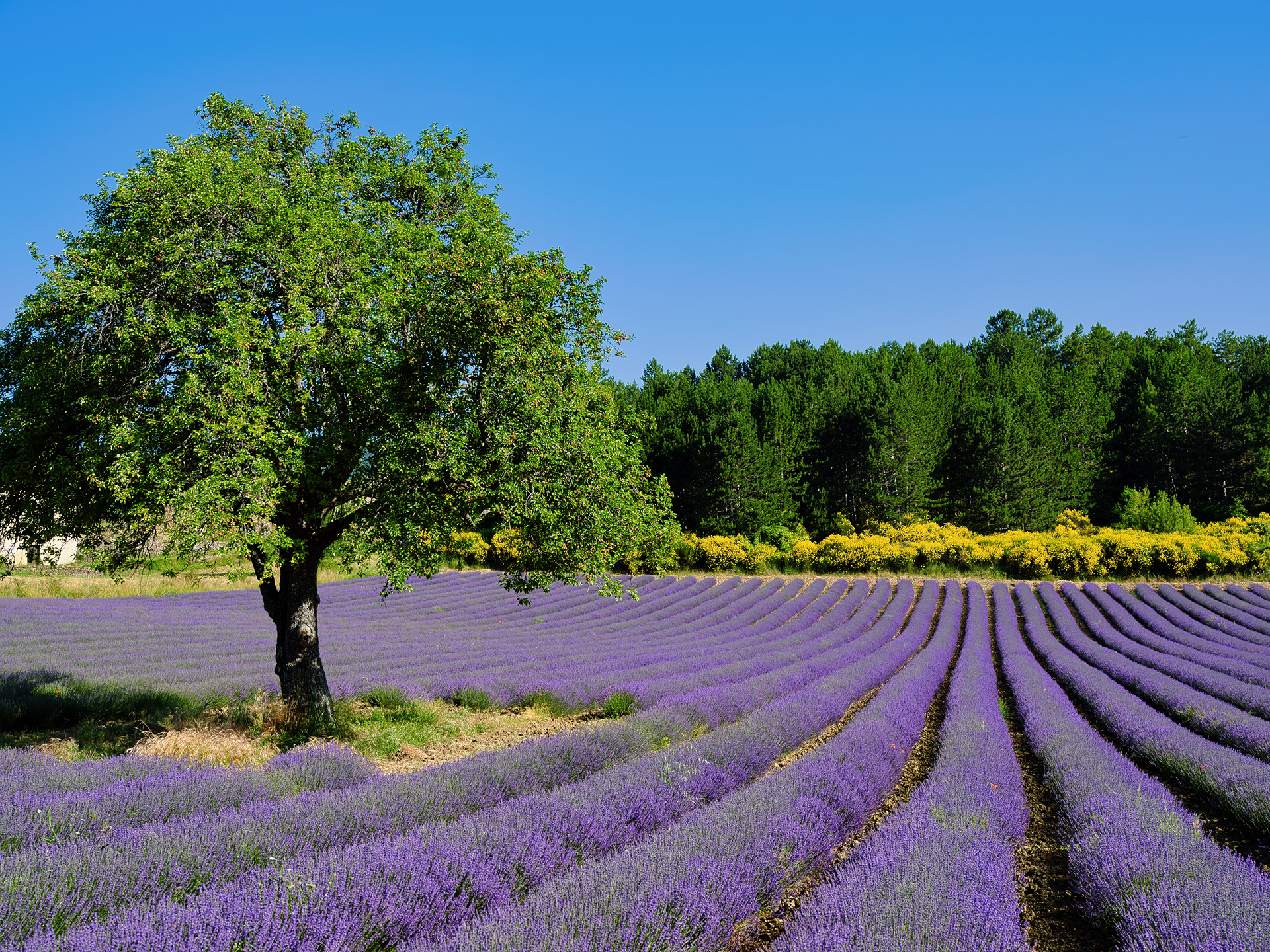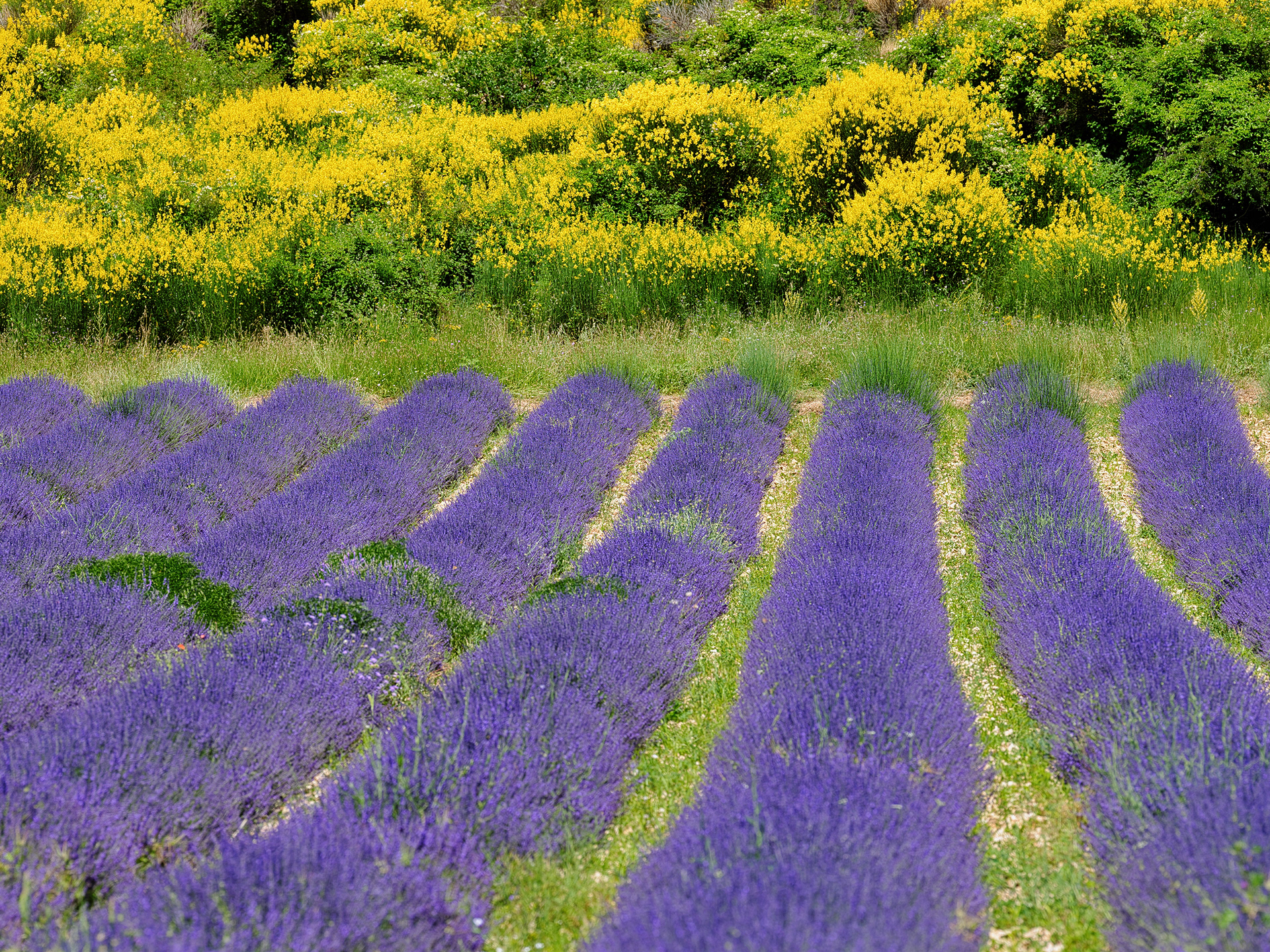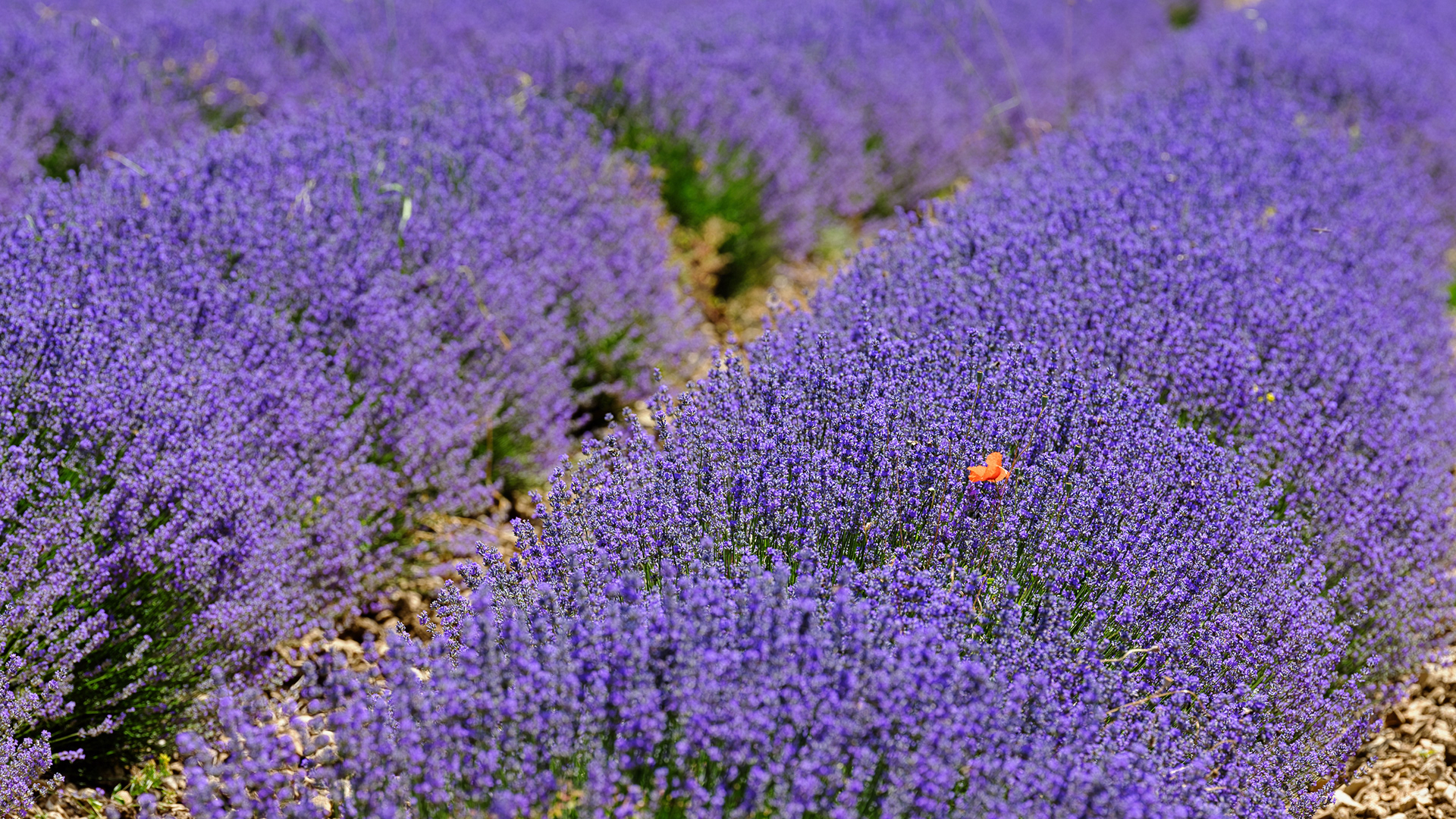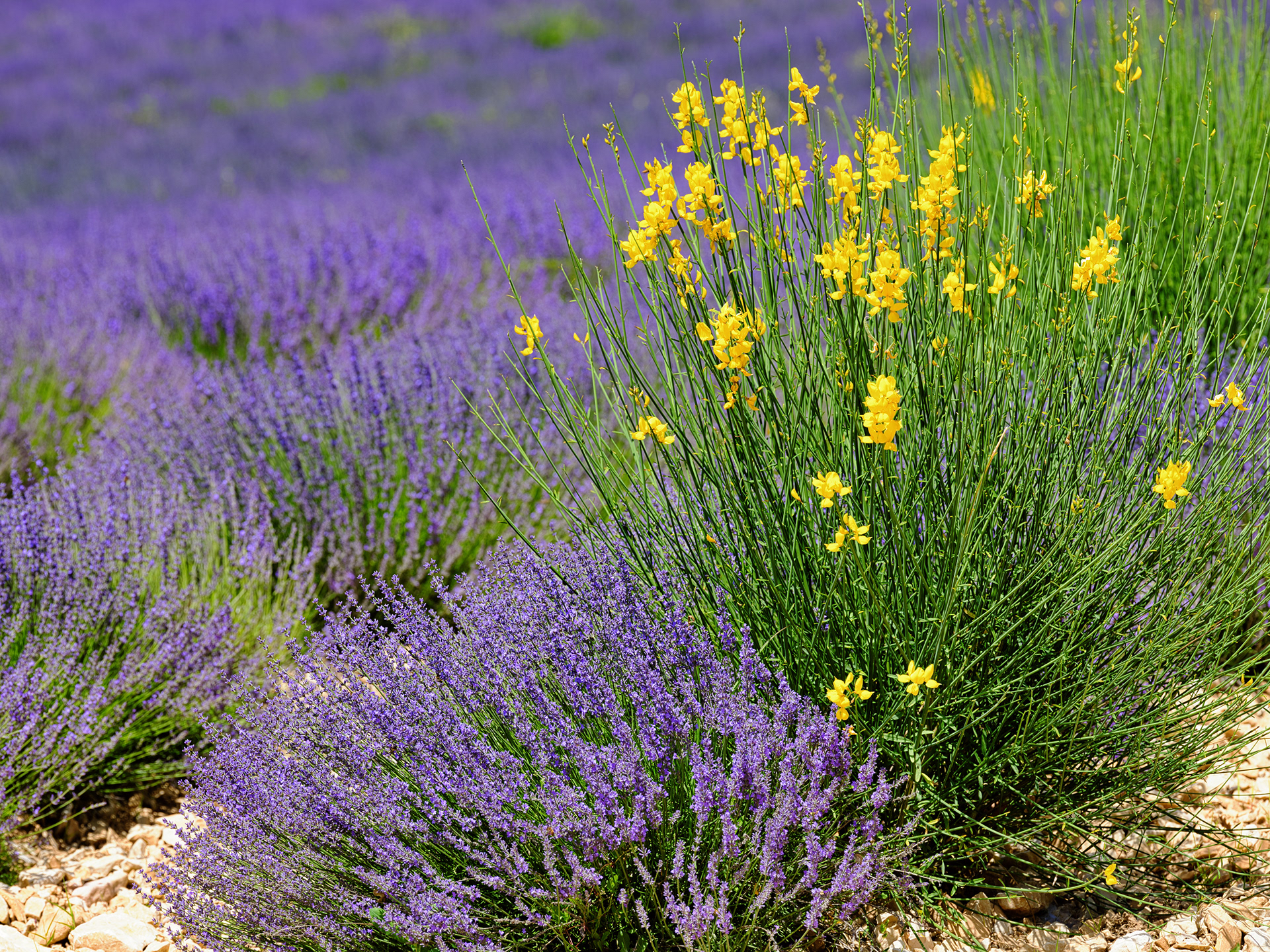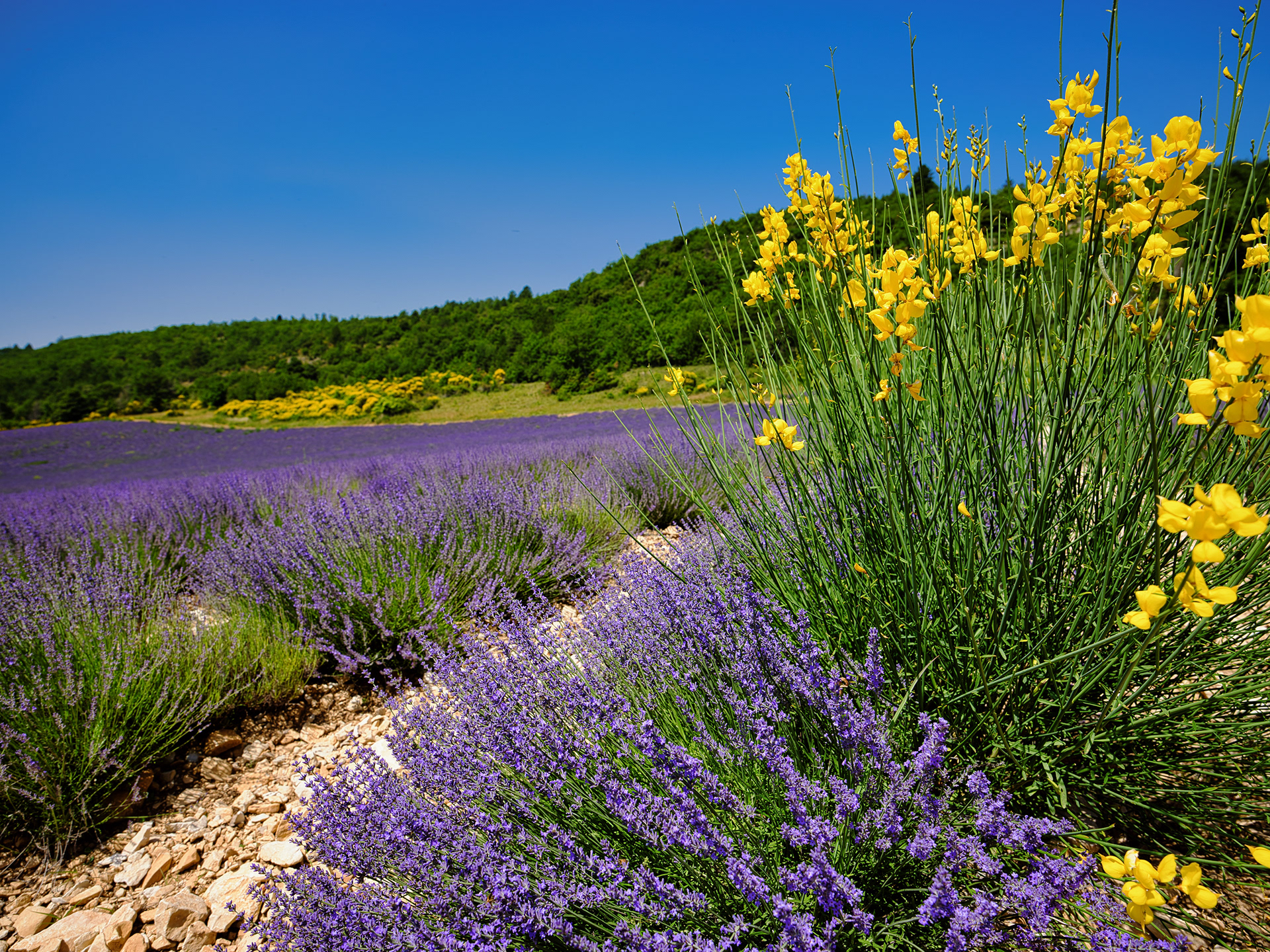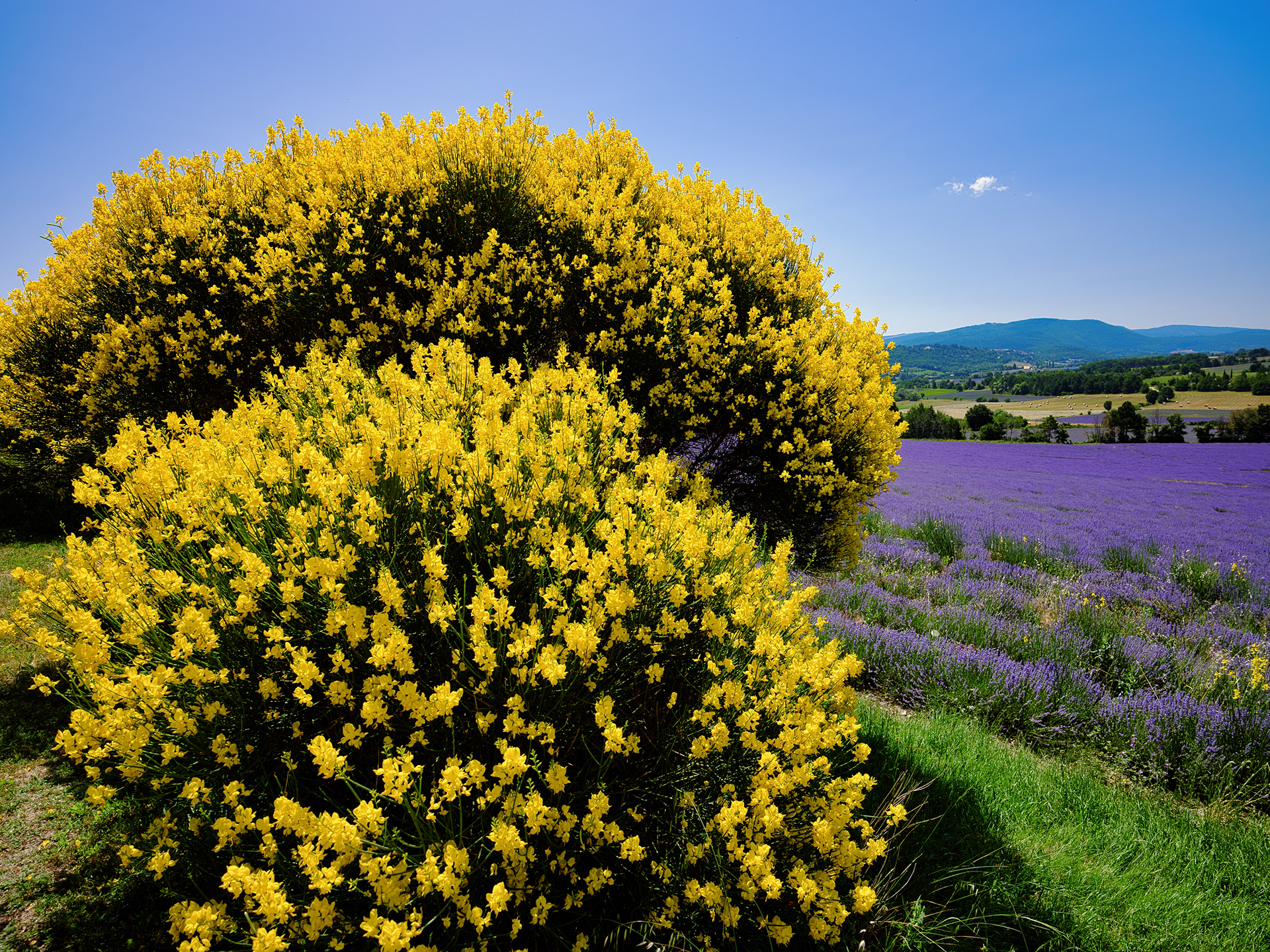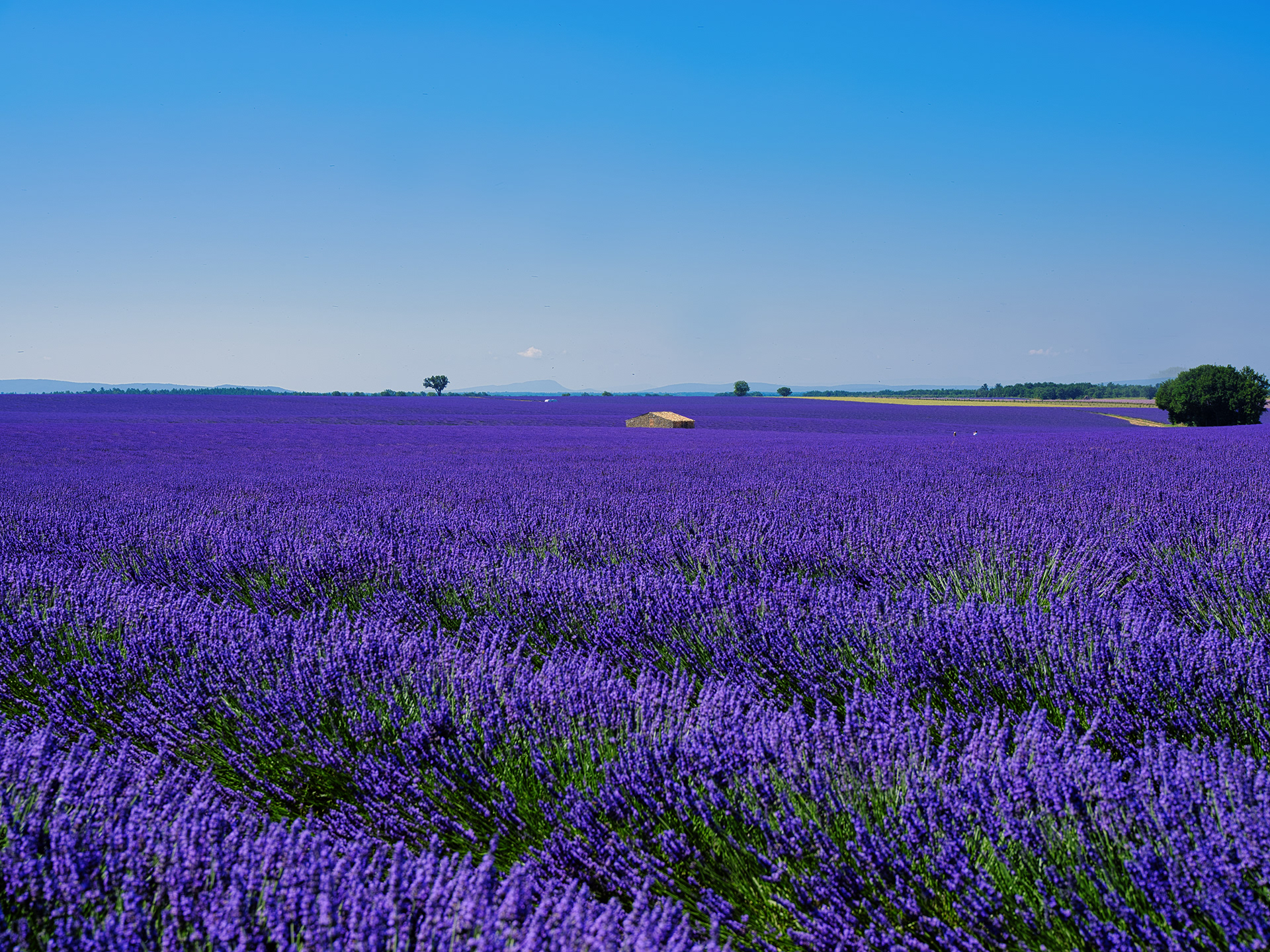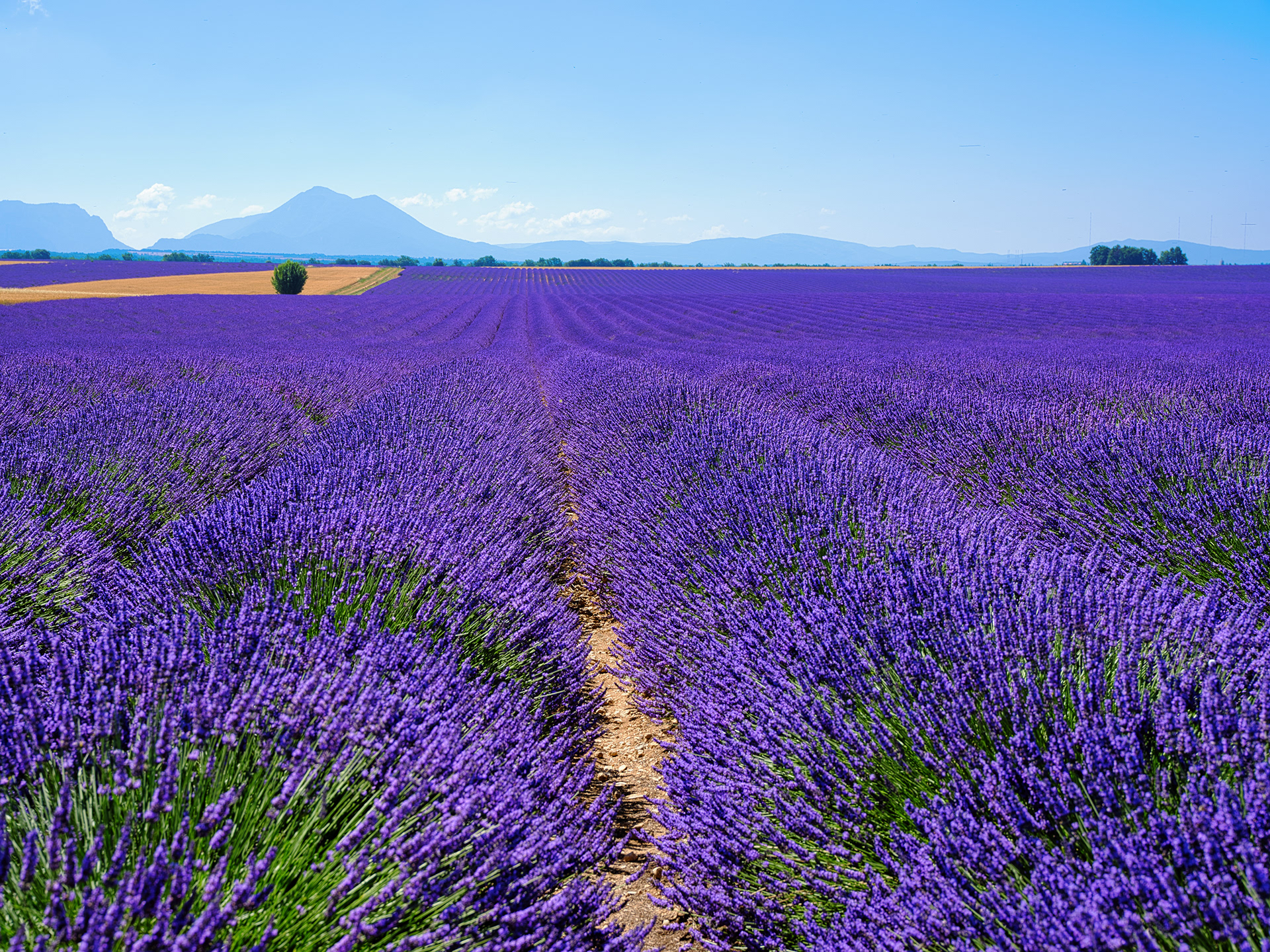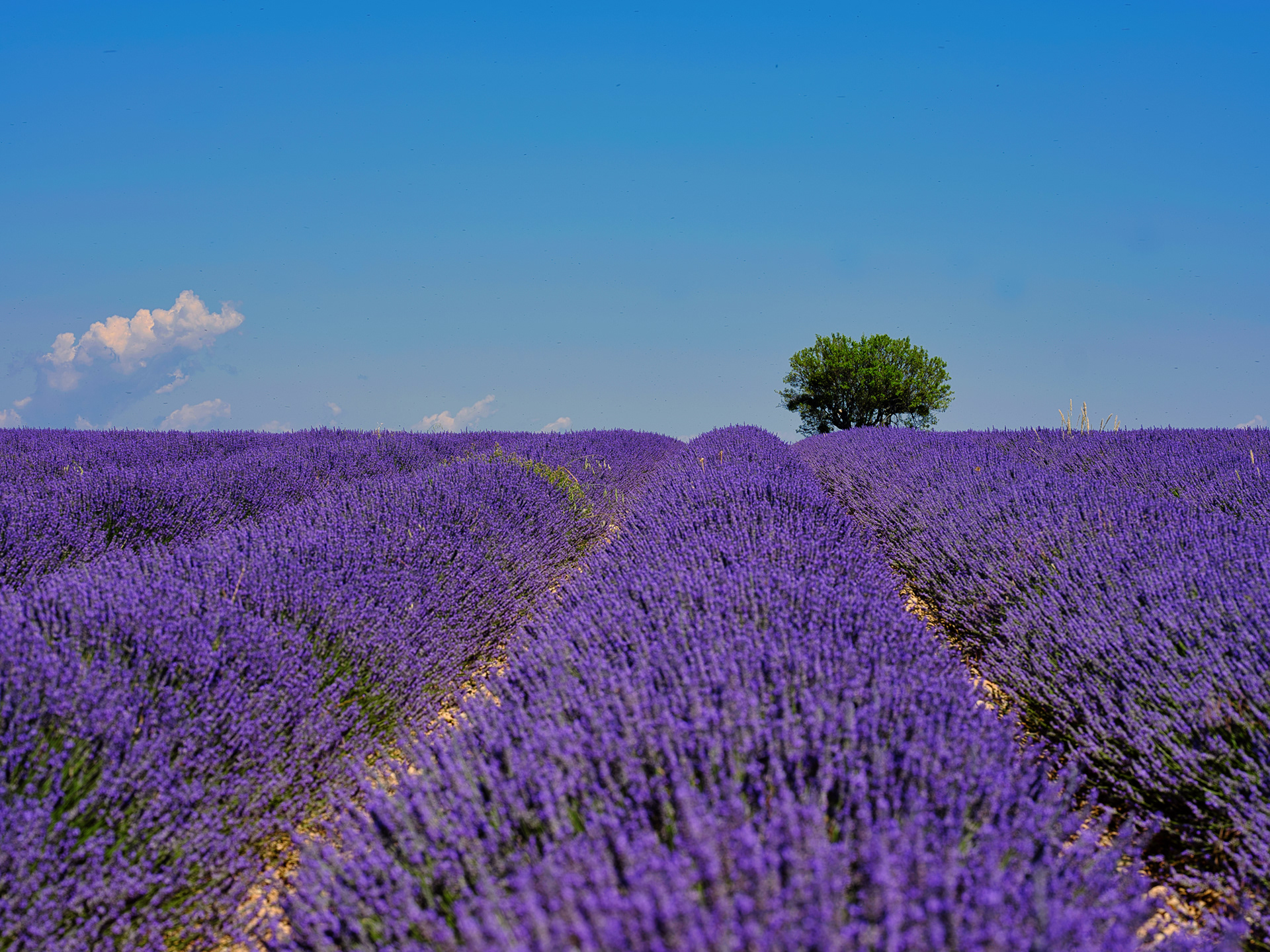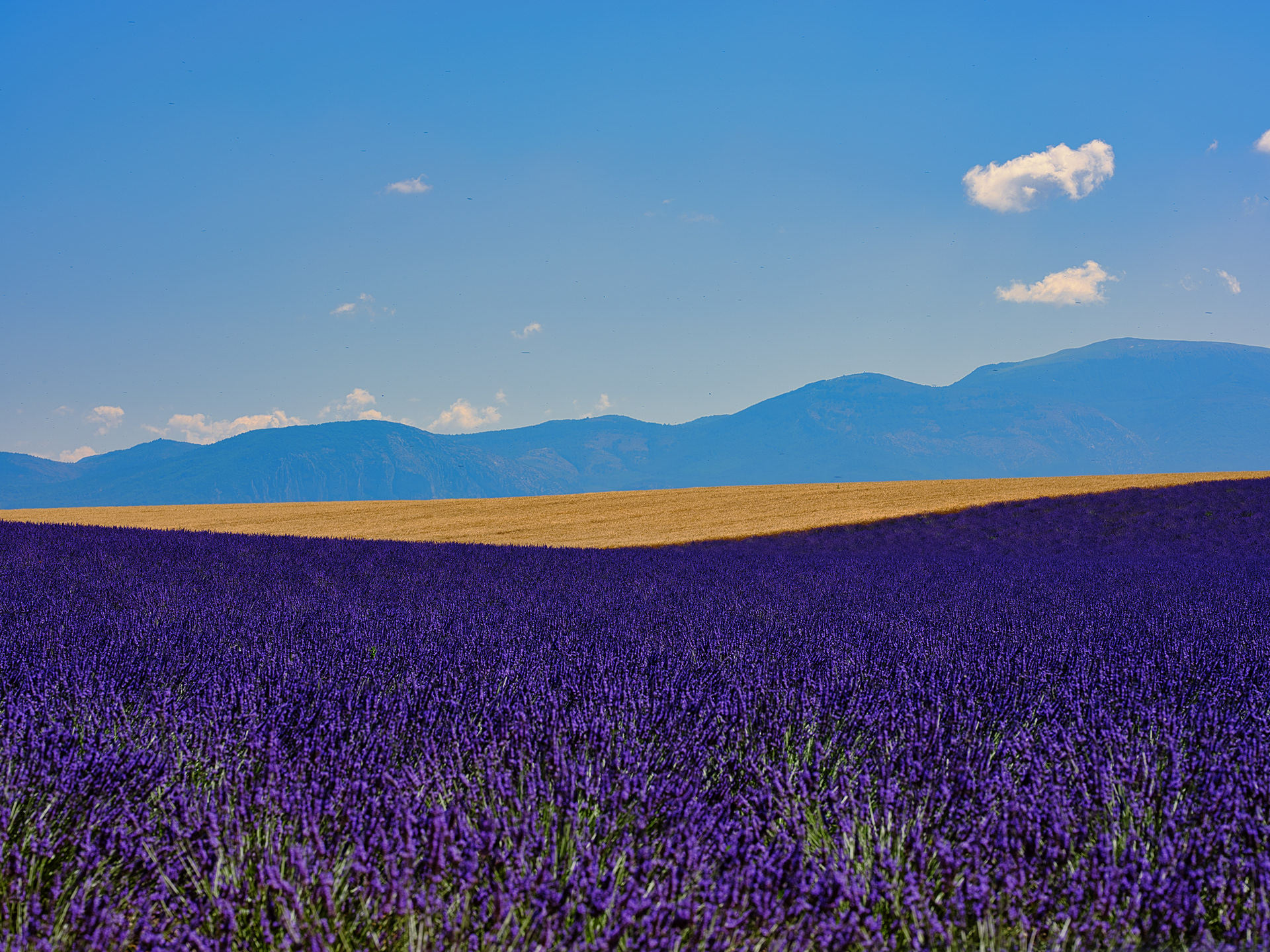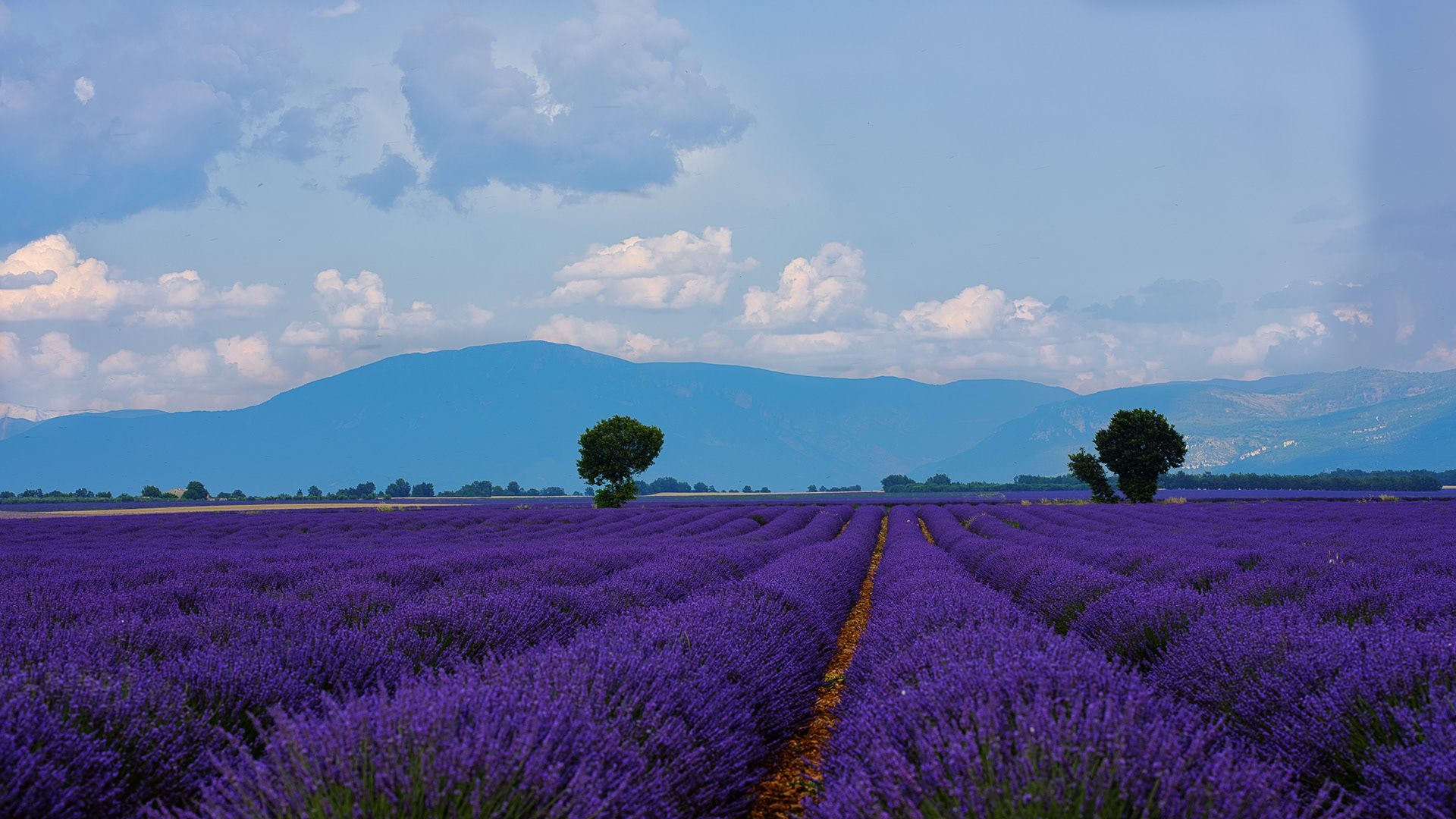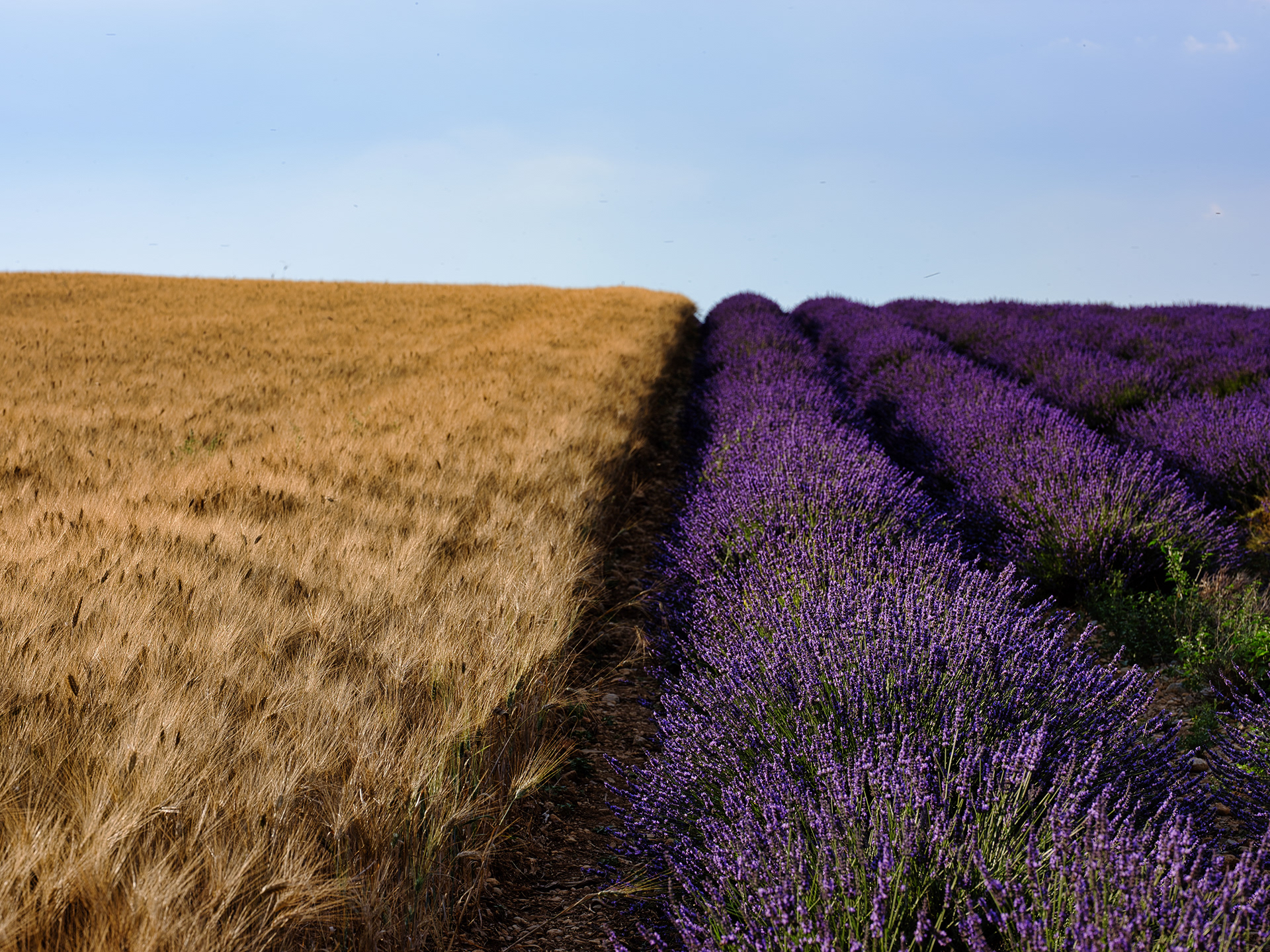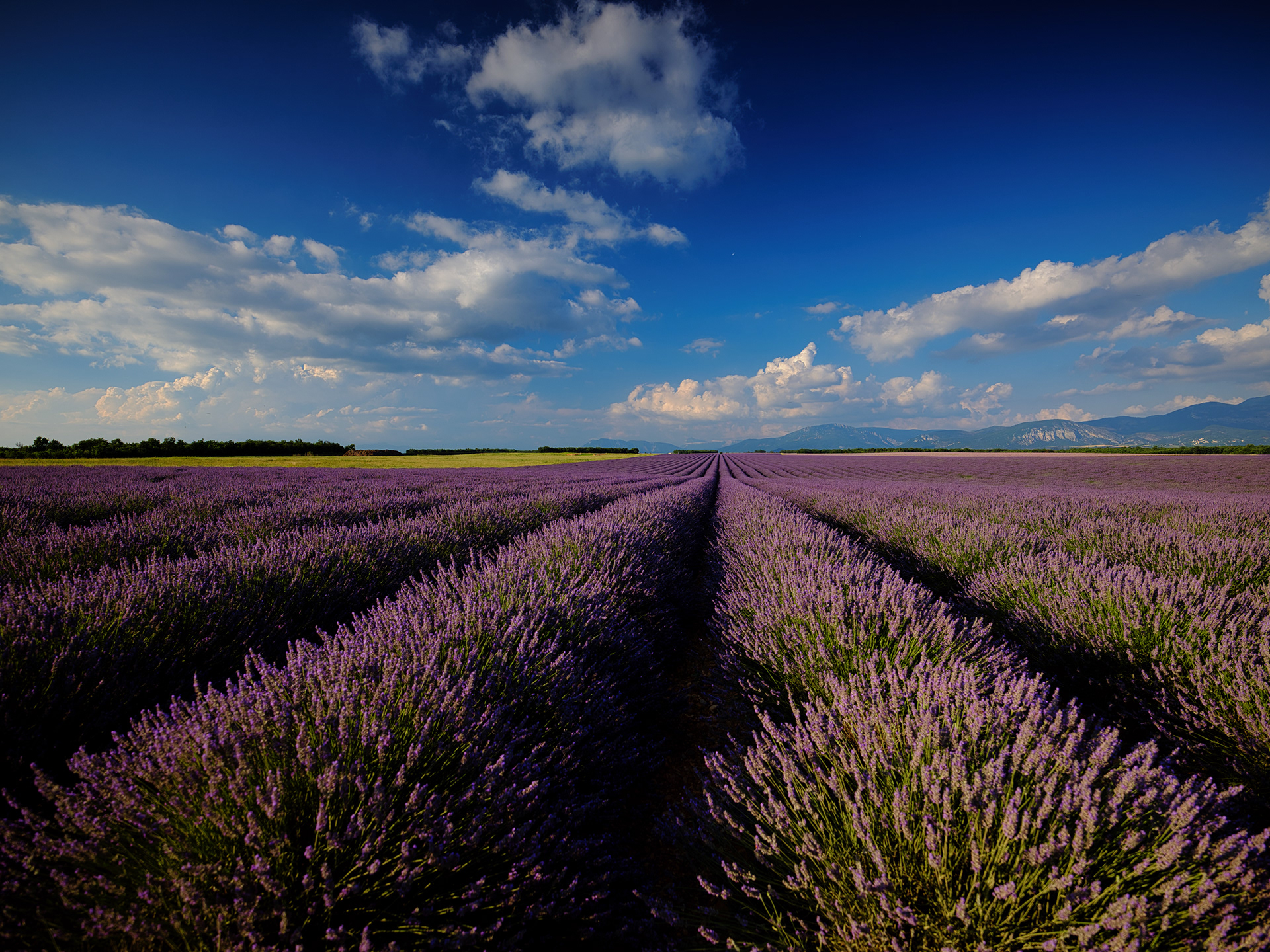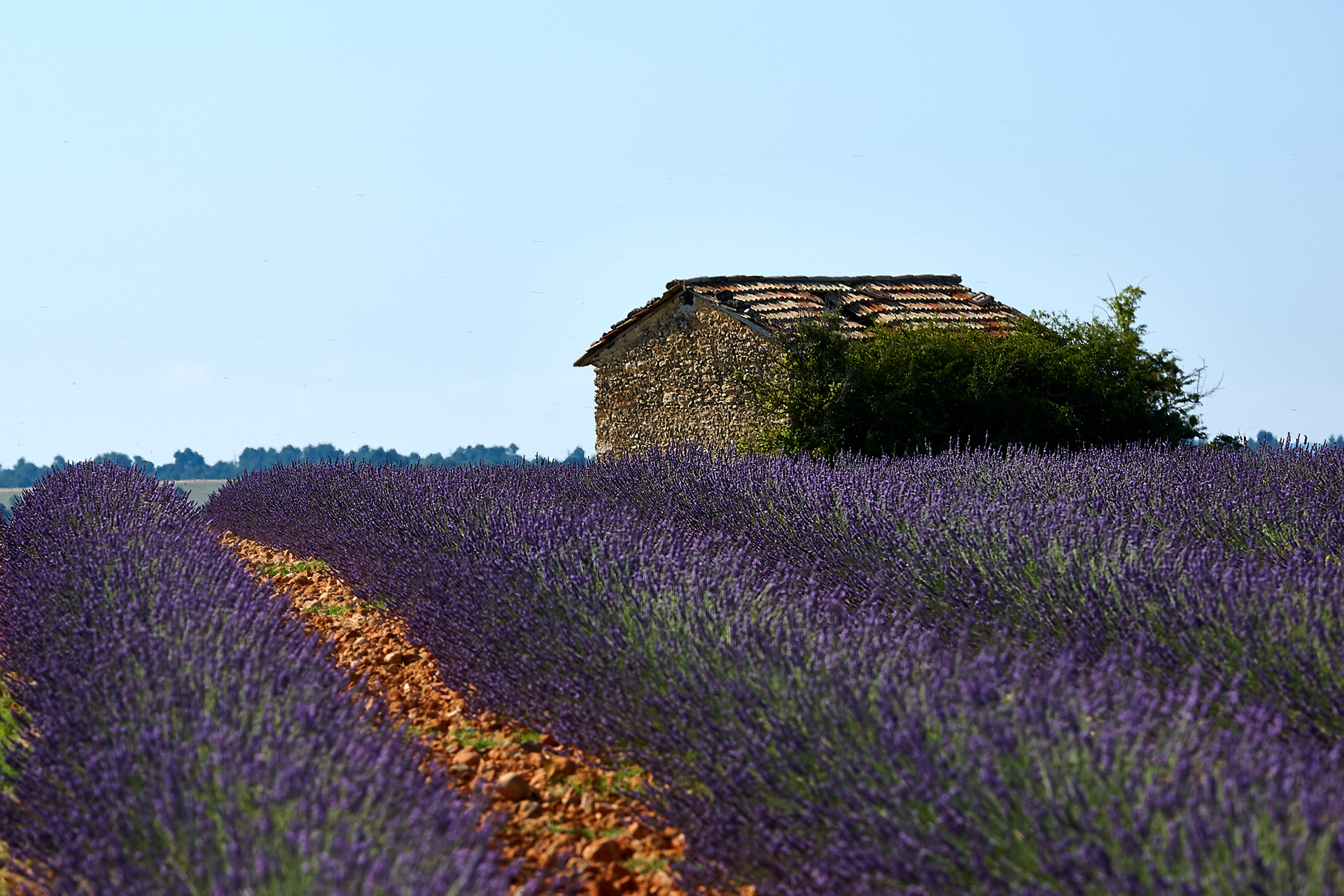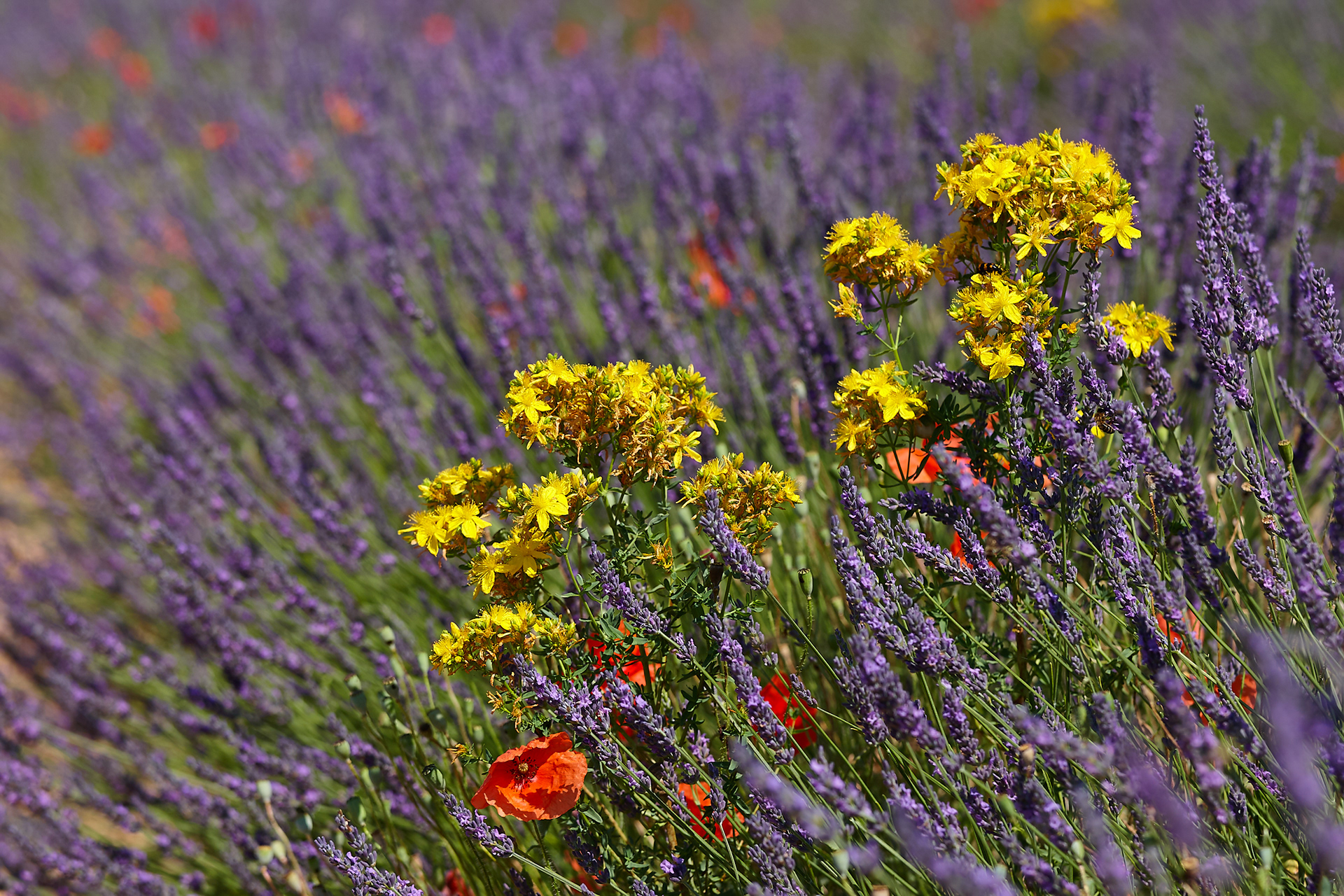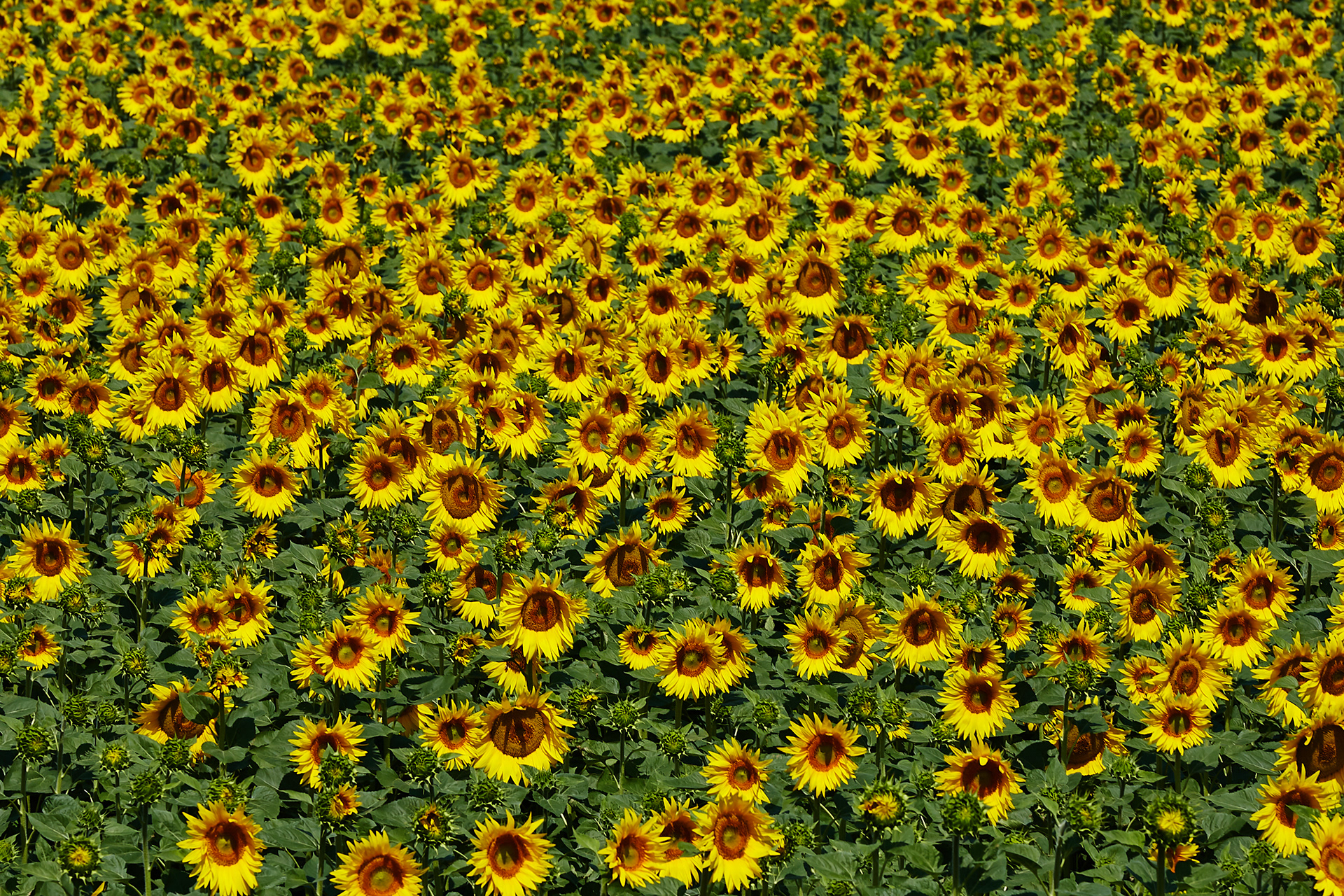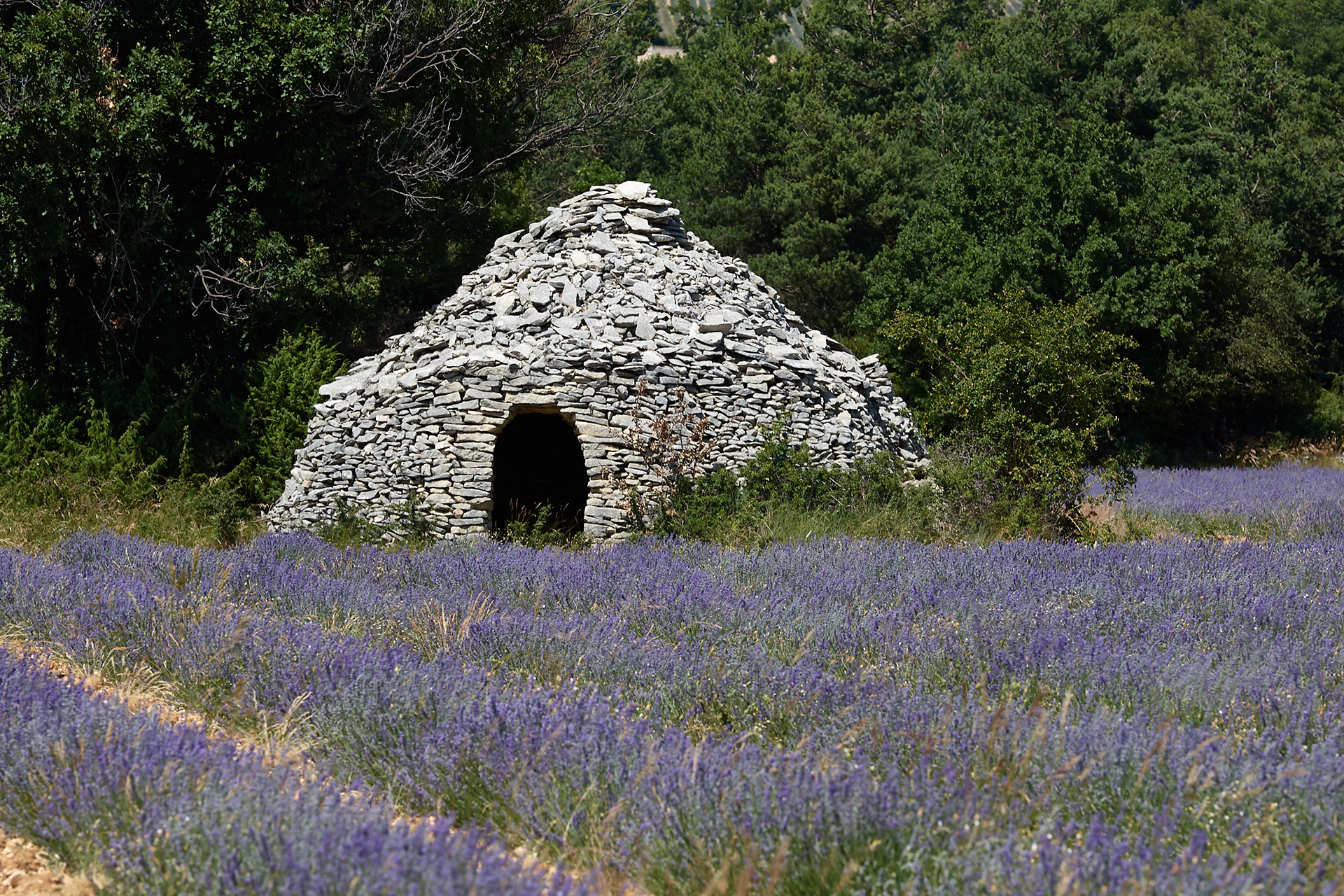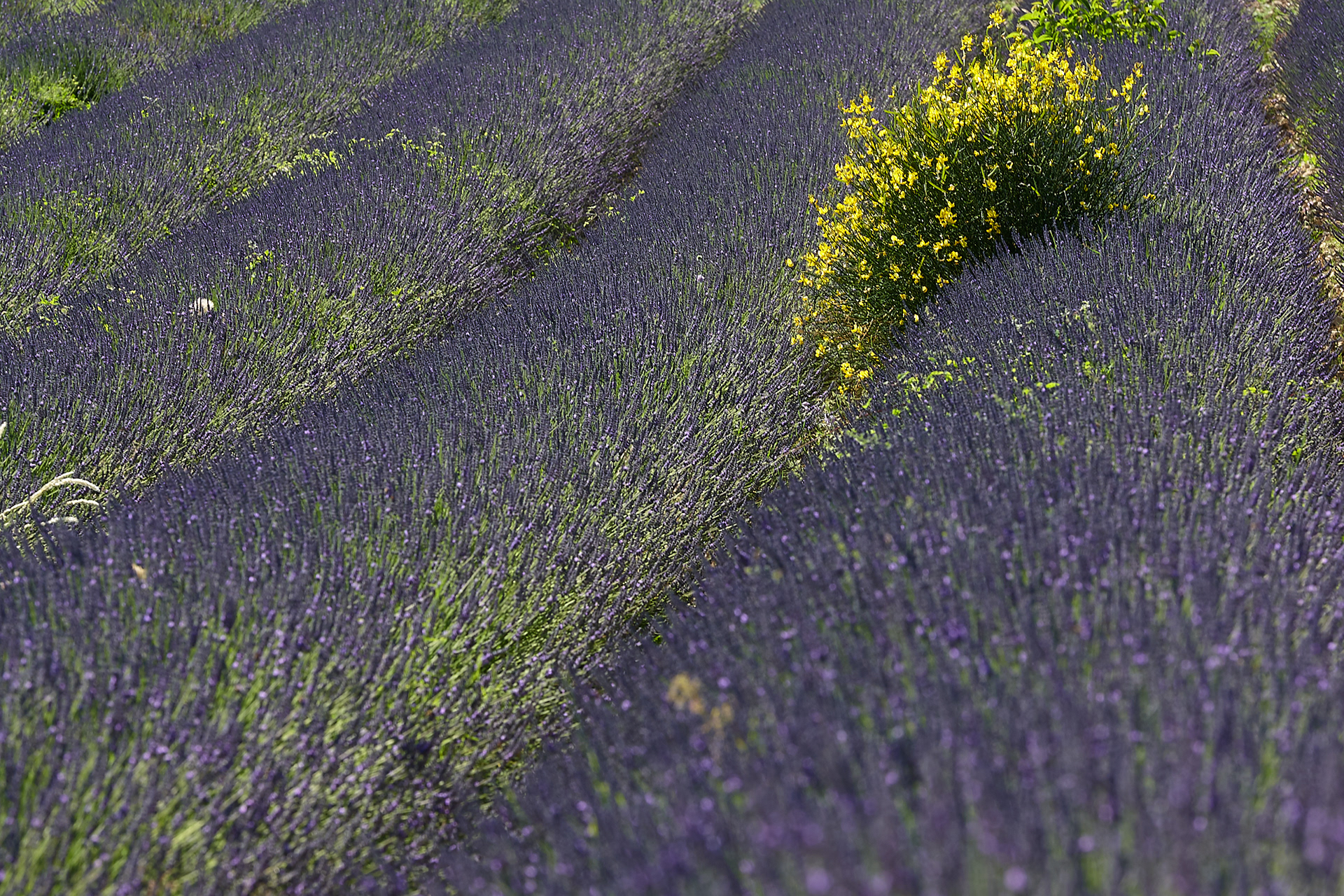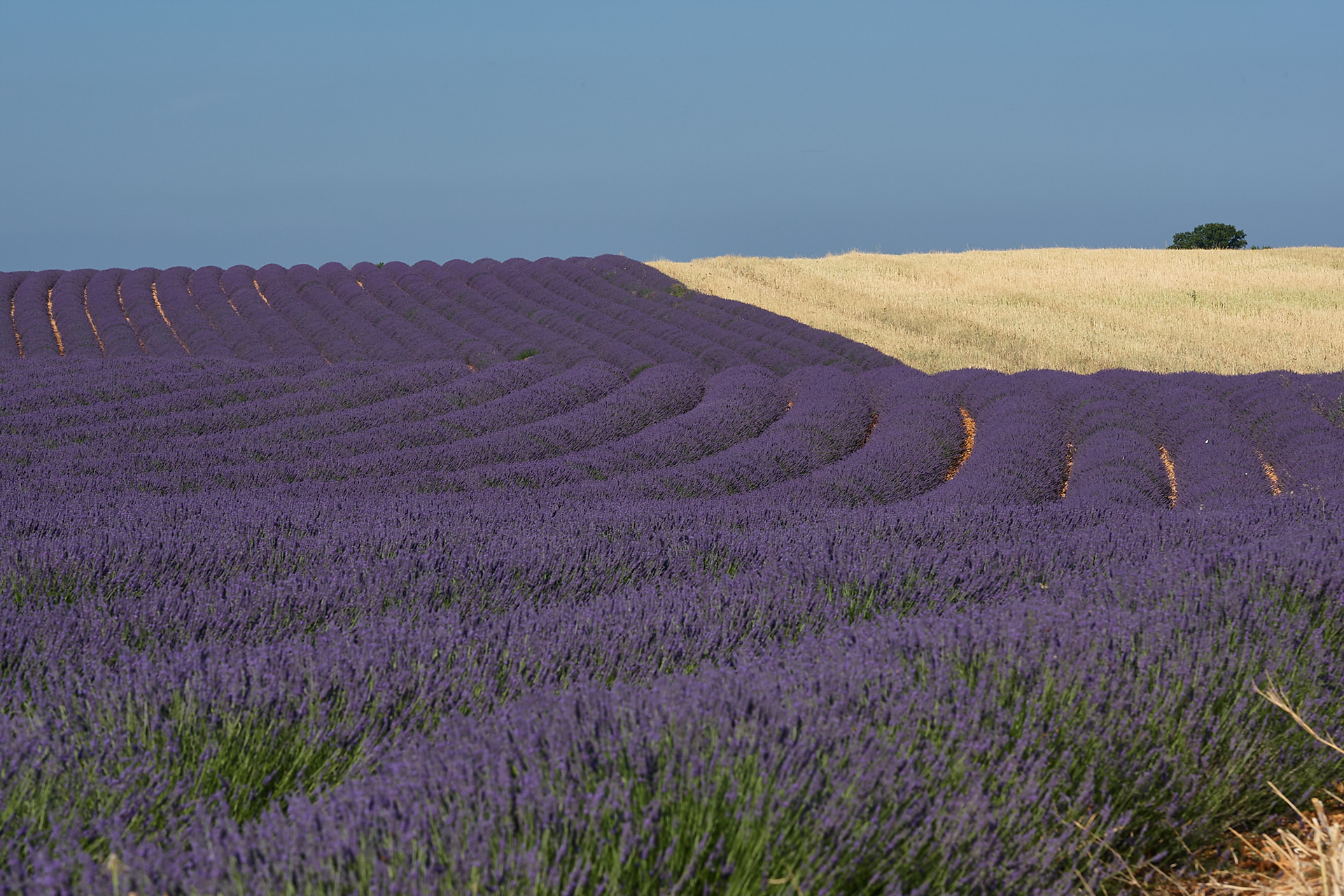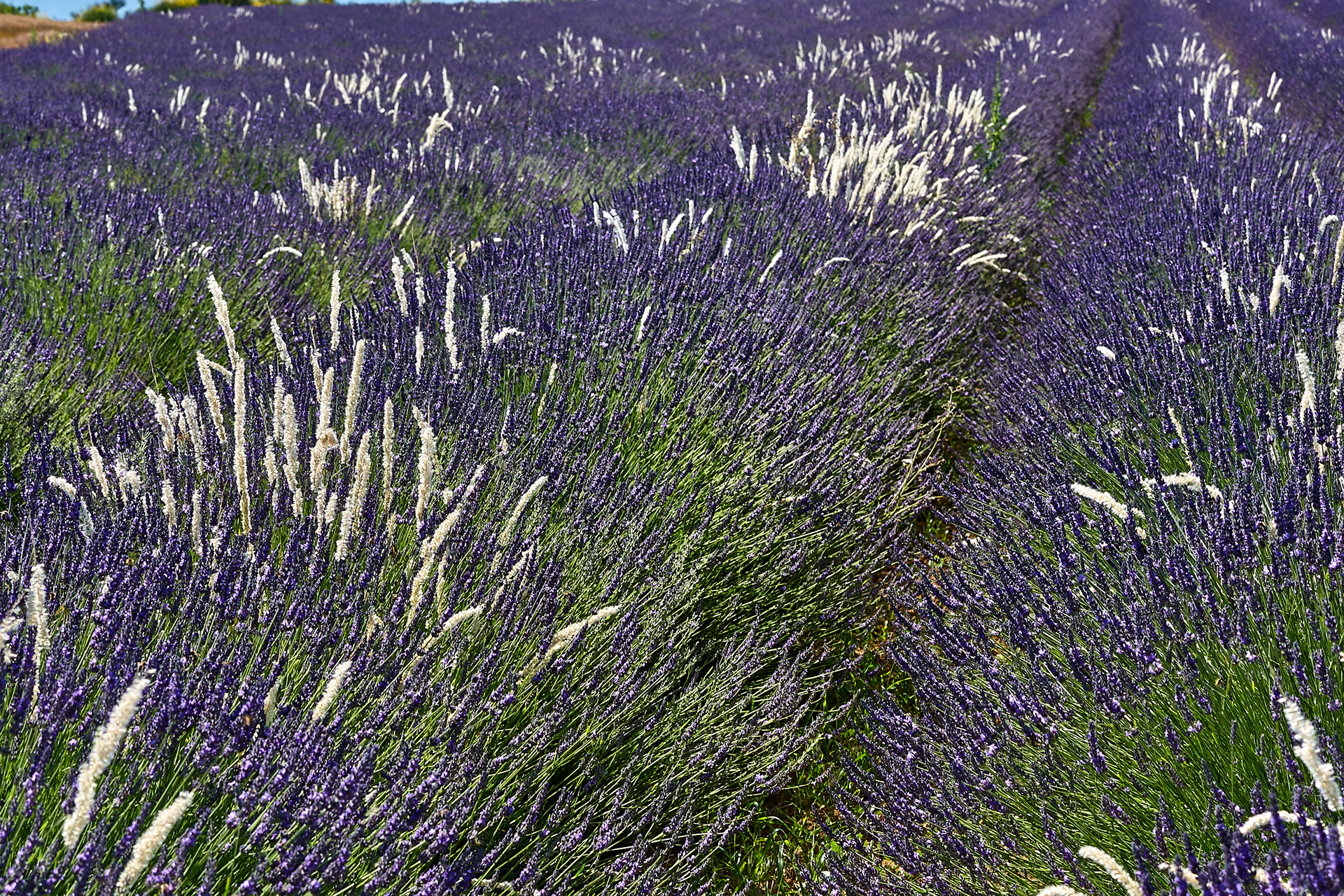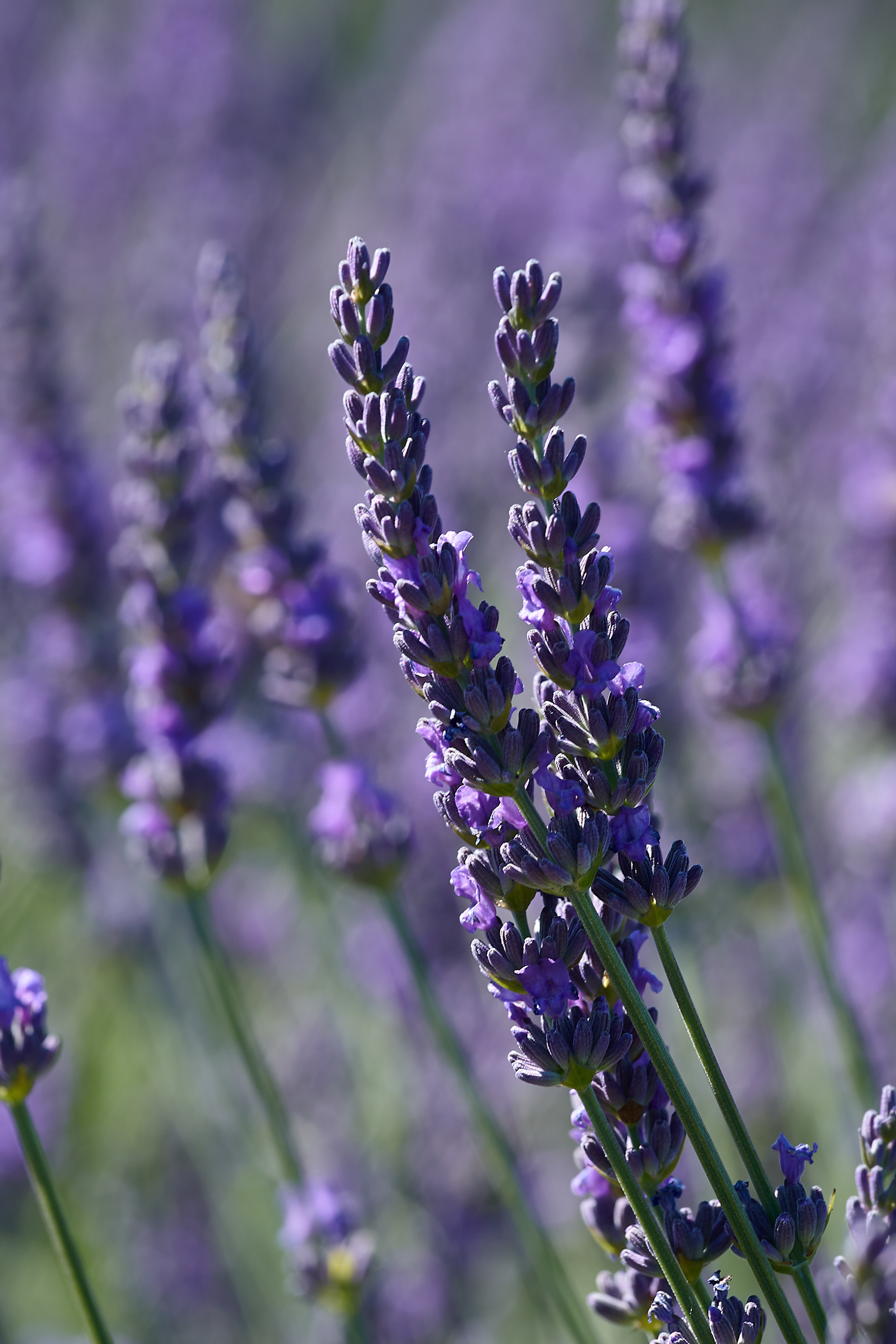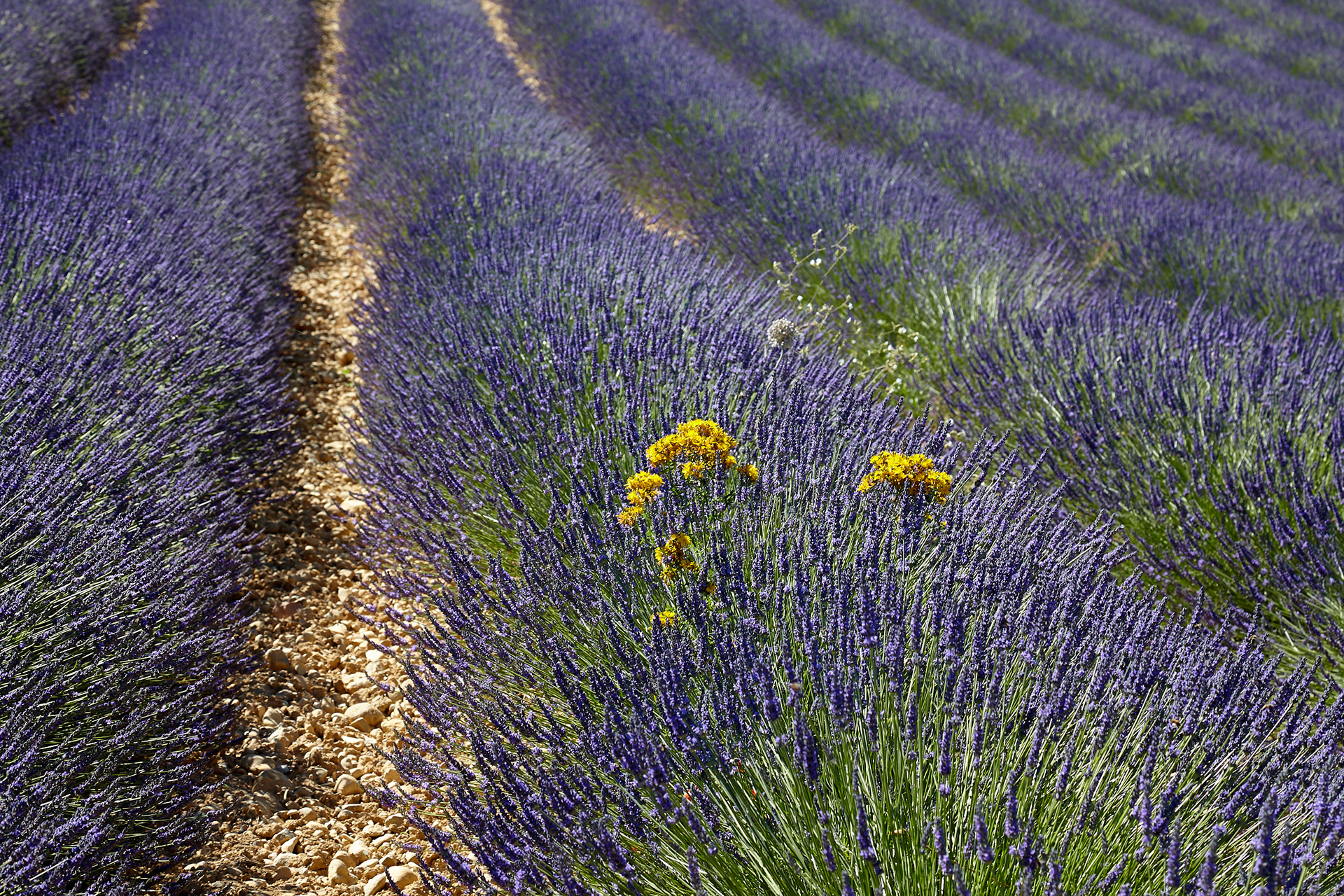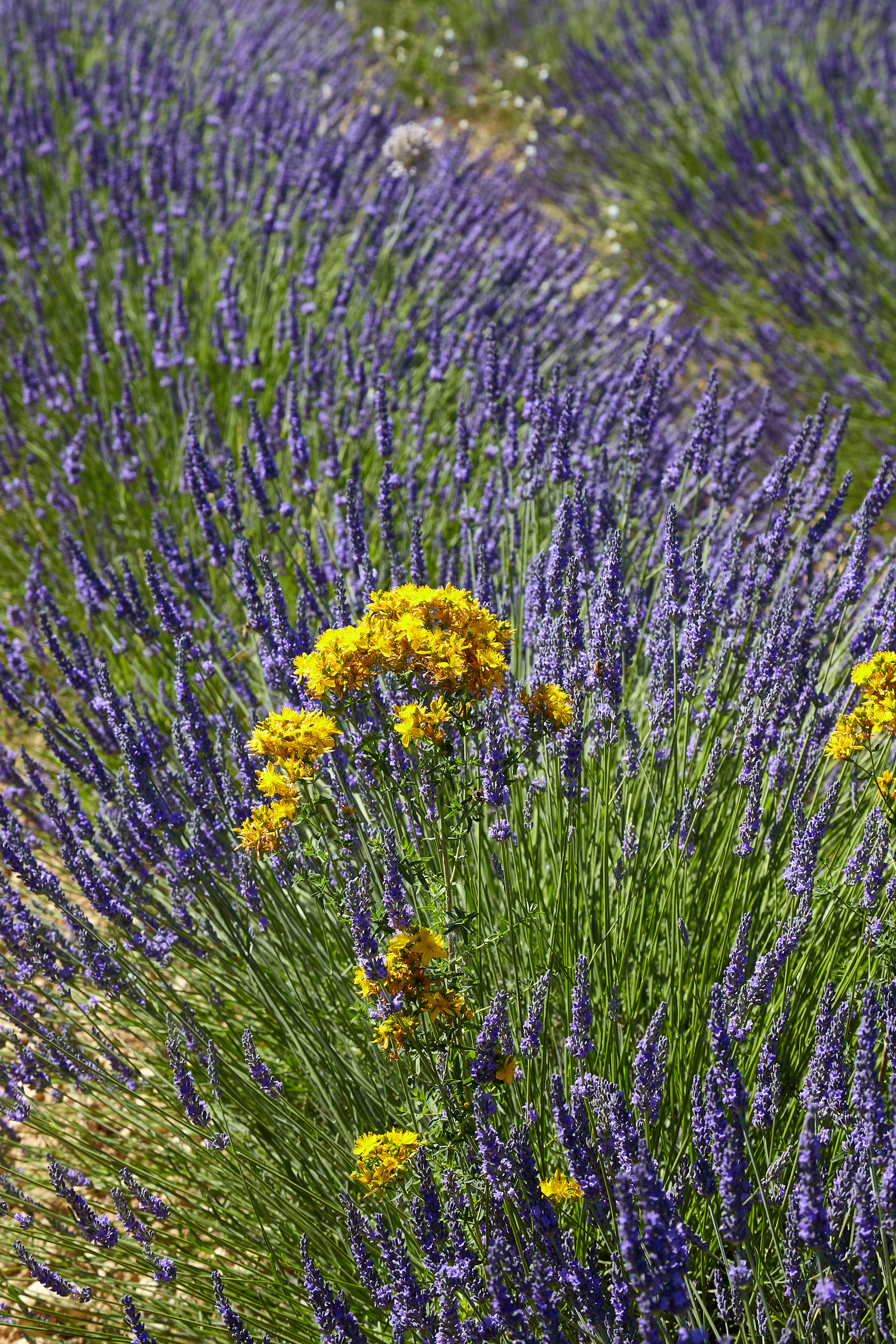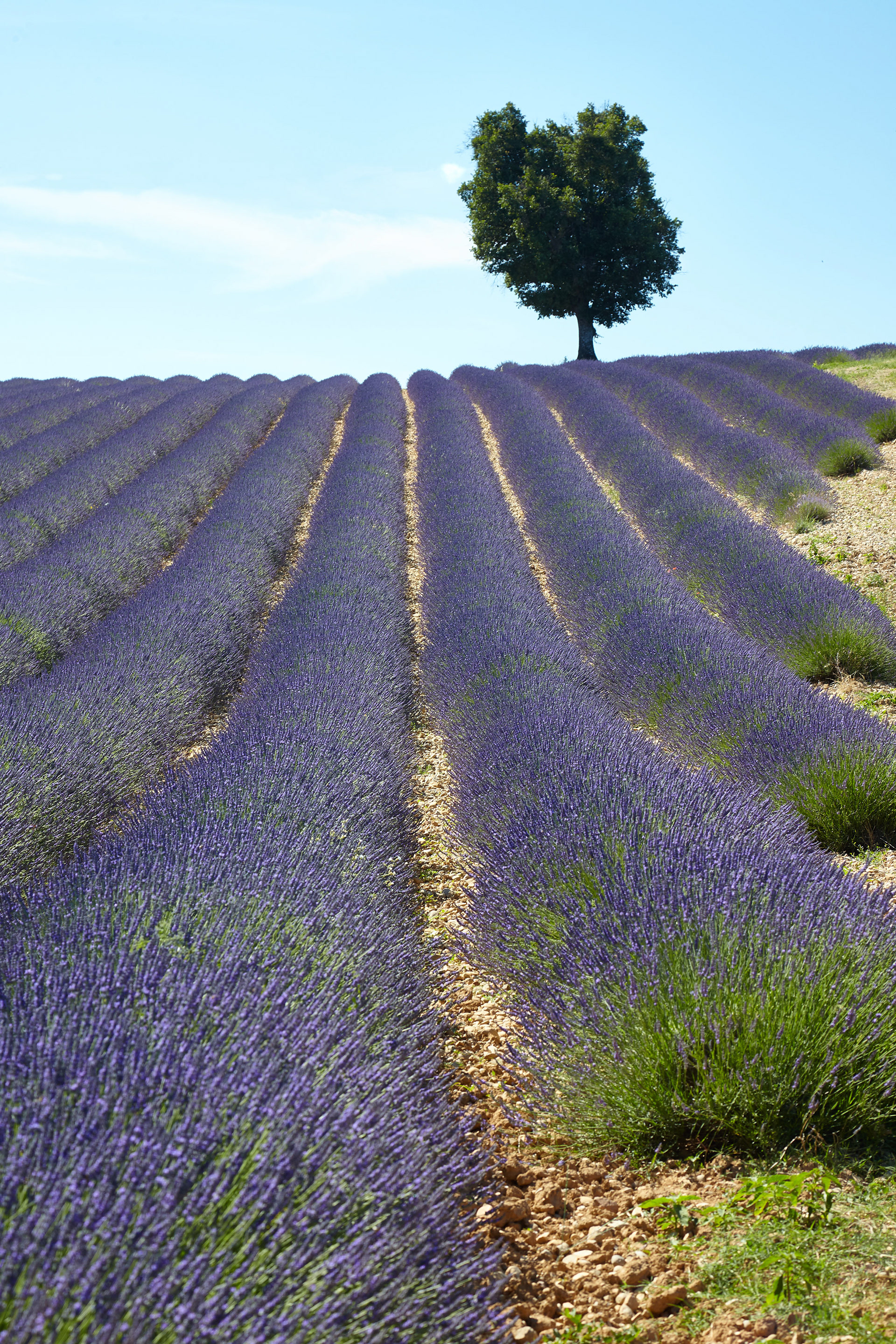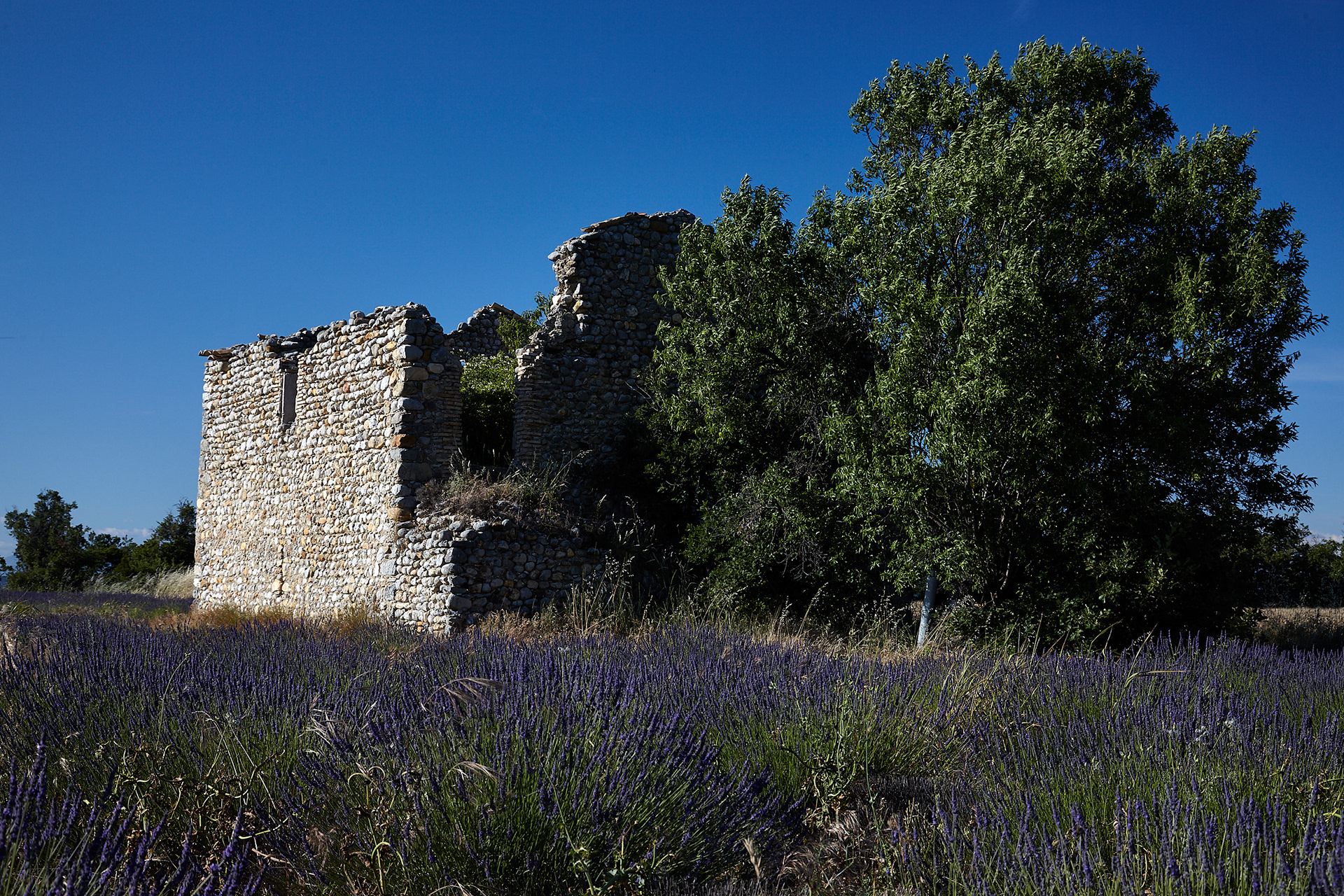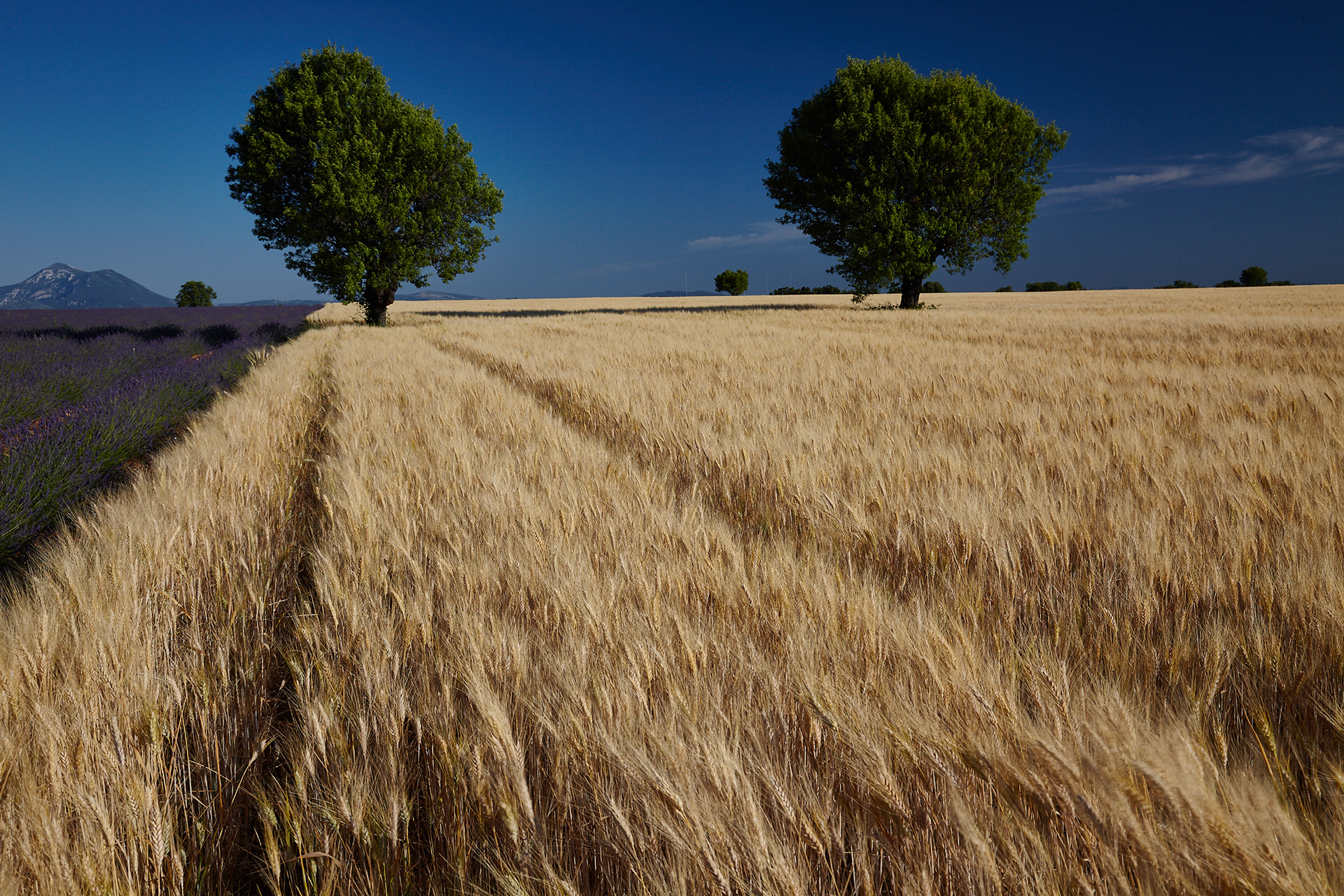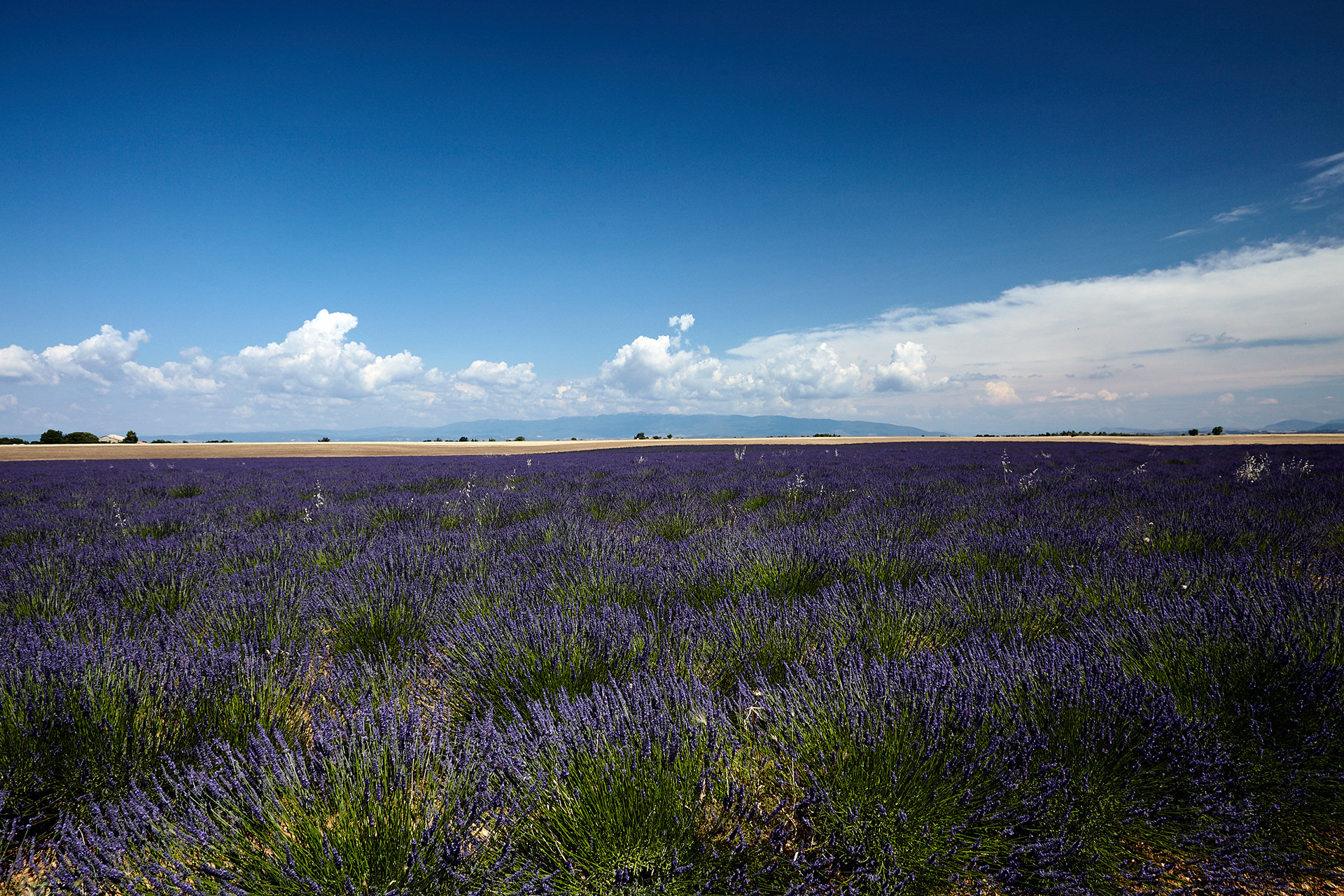"Le Pays bleu". Il paese blu, così i francesi chiamano quella parte della bassa Provenza che comprende la piccola regione della Vaucluse per il colore blu-viola che all'inizio di ogni estate ammanta campi e vallate a perdita d'occhio. E' la lavanda che viene coltivata su grandi estensioni per le industrie profumiere di Francia e che dona a tutta questa zona un colore e un fascino che difficilmente si può scordare. E' sufficiente addentrarsi in un campo di lavanda in una giornata di leggera brezza per essere avvolti letteralmente da una nuvola di profumo intenso,inebriante e poter vedere una miriade di insetti api e farfalle che volano di spiga in spiga alla ricerca di nettare. Caraterristico di questa zona è infatti anche il miele alla lavanda e una fama particolare ha quello prodotto dai monaci dell'Abbazia di Senanque.Due sono le zone dove si possono ammirare in particolare le splendide fioriture di lavanda all'inizio del mese di Luglio: l'altopiano di Sault e il Plateau di Valensole dove nel piccolo paese omonimo alla metà del mese di Agosto si tiene la festa della lavanda e in quella occasione il profumo scorre letteralmente a fiumi. Girando con calma per le numerose stradine che costeggiano campi a perdita d'occhio si può assistere alla raccolta ancora fatta a mano. Tagliata con un piccolo falcetto in piccoli mazzi viene poi portata in grandi capannoni aerati dove appesa a "testa" in giù si seccherà lentamente e naturalmente. Accanto a coloratissimi campi di lavanda potrà accadere di vedere dorati campi di farro che creano un contrasto cromatico unico. Ovviamente la Provenza non è solo lavanda. Numerosi e deliziosi sono i piccoli paesi che possono essere visitati: Gordes, Fontaine-de Vaucluse,Isle sur la Sorgue e da non dimenticare Roussillon con le sue famose cave di ocra. Gli amanti della natura pura non potranno dimenticare il Parco del Luberon con i suoi paesaggi aspri e la sua tipica vegetazione influenzata fortemente dal clima mediterraneo che ha fatto sì che quì si sviluppasse una grande varietà di specie animali e vegetali. La provenza non è quindi solo terra di piante aromatiche, dai profumi intensi e penetranti, ma un insieme di suggestioni,di luci e di colori, di paesaggi ora dolci ora forti che ammaliano con la loro bellezza anche il visitatore più disincantato.
" Le Pays bleu". The blue country, that is what the French call the part of Lower Provence that includes the small region of Vaucluse, because of the blue-purple colour that covers the fields and valleys as far as the eye can see at the beginning of each summer. It's the lavender that is grown in great fields for the perfume makers of France and endows this area with a colour and charm that is difficult to forget.You just have to go into a field of lavender on a day with a light breeze to be literally enveloped in a cloud of intense, dizzying scent and to see a myriad of insects, bees and butterflies flying from ear to ear in search of nectar. In fact, lavender honey is another typical feature of this area; the honey produced by the monks of the Senanque Abbey being particurly renowned.There are two areas where the splendid flowering of lavender can be admired in particular at the beginning of July: the upland of Sault and the Valensole Plateau, where in the small village of the same name in mid-August they hold the lavender festival in which the scent of lavender literally flows in aboundance. Strolling through the numerous little streets that flank the boundless fields, you can still see the harvest being collecyed by hand. The small bunches are cut with a bill-hook and then taken to large ventilated sheds where they are hung upside down to dry slowly and naturally.Next to the brightly-coloured lavender fields you may chance to see golden fields of spelt that create a unique chromatic contrast. Obviously, Provence is not just lavender. There are plenty of beautiful little villages to visit. Gordes, Fontaine de Vaucluse, Isle sur la Sorgue and not to forget Roussillon with the famous ochre pits. Lovers of pure nature will not forget the Park of Luberon with hits craggy landscapes and its characteristic vegetation strongly influenced by the Mediterranean climate that has enabled a marge variety of animal and plant species to develop.Provence then, is not just a land of aromatic plants with intense, penetrating scents, but an ensamble of atmosphere, light and colour of landscapes sometimes gentle, sometimes dominating, which charm even the most disenchanted visitor with their beauty.
